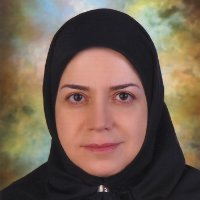Applying Users' Environmental Preferences as an Approach to Improving Urban Riverside Spaces; Case study: Riverside of Babolrood, Babolsar.
The urban environment can simultaneously form the users’ behaviors and also can be adaptable by users’ behaviors, therefore creating spaces based on the desires as well as needs of users seems necessary in order to create a lively and dynamic urban space due to achieving to the maximum of residents’ satisfaction. Accordingly, this study has tried to investigate the preferences of users of an urban space and based on gained data from users’ experiences, makes an effort to achieve to a desirable space that is parallel with the demands and needs of users. The field study of this research is included two main stages: the first stage is conducted by an observational study. In the second stage, an interview was conducted with users in the form of a semi-structured questionnaire consisting of a combination of survey, scoring, prioritization, and explanatory questions. The final number of questionnaires was 324. In addition, an attempt was made to collect all the information extracted from the questionnaires in the form of simple and legible tables as the main interview data. The analysis are conducted by utilizing the qualitative content analysis also in some cases, the categorization of items and data was used. As a result, the most important items that cause user dissatisfaction were classified into three components: interference, disturbance, and noise (noise pollution), and finally, these items and components are a subset of Categories that affect users' environmental preferences include privacy, safety, security, noise pollution, spatial hierarchy, and pedestrianism, and suggestions have been presented to improve them. Also, using the Uman-Whitney test, it was found that the lighting system of the area was not appropriate at night, while users were satisfied with the amount of urban furniture. Adequacy of rest spaces is also one of the demands of users in the area.
-
Identifying the Influencing Elements on the Citizens' Cognitive Map on Strengthening the Sense of Place (Case Study: Aliqapu Ardabil Pedestrian Street)
Nasrin Mohammadi, *
Journal of SHAHR-HA, -
The Influence of Ritualistic Landscapes on Public Perceptions for Advancing TourismThe Case of the Haft-Cheshmeh Bridge and the Nousti Ceremony in Ardabil
Nasrin Mohammadi Irloo, *
Tourism of Culture Journal, -
Impact Assessment of Second Homes on the Social and Economic Sustainability of Coastal Cities in Mazandaran Province: Nur, Chalus and Babolsar
Elyas Kazemzadeh Meschi *, , Nosratollah Goudarzi
Journal of Architecture and Urban Planning, -
Application of Observational Study in Order to Design Urban Pedestrian Environment Based on User’s Behavioral Patterns; Case Study: The Riverside of Babolrood, Babolsar
Amirsam Saadati, Vahid Heidarnattaj *,
Architectural Thought,





